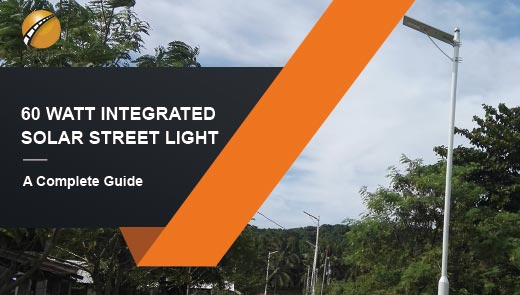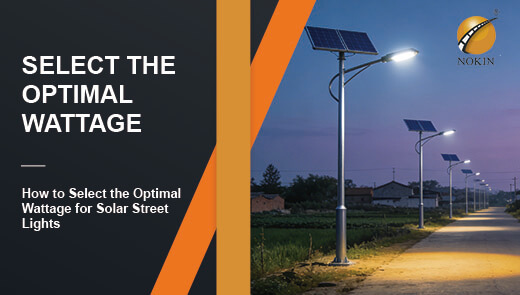Why Do Solar Street Lights Fail So Quickly?
In recent years, the development of solar street lights has been very rapid. With the advantages of energy conservation, environmental protection and easy installation, they have been widely used in many scenarios such as urban and rural roads, parks and communities. However, at the same time, feedback such as "street lights not lighting up after one year of use" and "malfunctions just after the warranty period" has occurred frequently. The rapid failure of solar street lights not only increases the replacement cost but also affects the safety of night lighting.
Next, NOKIN will disassemble the core reasons for the rapid failure of solar street lights from three dimensions: environmental impact, component quality, and maintenance and installation, and provide practical life extension solutions to offer references for purchasers and operation and maintenance parties.
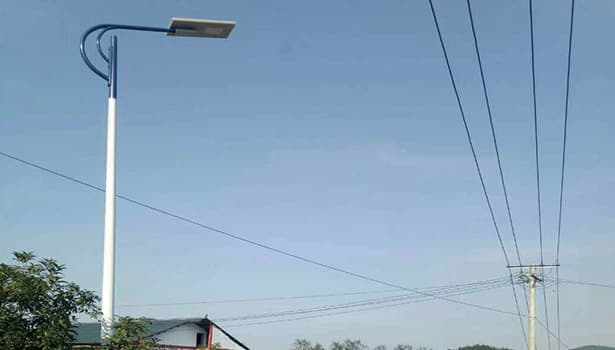
3 Reasons for the Quickly Failure of Solar Street Lights
Environmental Factors
Solar street lights are exposed to the outdoors for a long time. Factors such as light, temperature and humidity, and geographical location in the environment will directly accelerate the aging of components or cause functional abnormalities.
Insufficient lighting
The core of solar street lights is the conversion of "light - electricity - storage - light". If the light is insufficient and the battery cannot be fully charged, it will cause the street light to "operate with low power", which will directly shorten its lifespan in the long run.
Occlusion problem
Common occlusion sources include two types:
- Fixed obstructions: Tall trees on both sides of the road (such as plane trees and poplars), and buildings along the street (such as balconies above the second floor of shops and billboards). For instance, in a certain residential community, street lights are installed in front of buildings. During winter, the midday sunlight is blocked by the balconies on the third floor, and the effective charging time each day is only 2 hours (normally it takes 4 to 6 hours).
- Dynamic shading: Fallen leaves, willow catkins and industrial dust accumulate on the surface of the panel, forming a "shading layer". Due to dust emissions from surrounding factories, the dust thickness on the surface of the street lights in a certain industrial park reached 2mm within one month, directly blocking 30% of the light.
Panel contamination
The impact of different pollutants on the panel power generation efficiency varies significantly. The specific data is shown in the following table:
|
Pollutant Type / Scenario |
Accumulation Thickness / Coverage |
Decline in Power Generation Efficiency |
Common Scenarios |
|
Dust / Dirt |
1 mm |
15%–20% |
Urban roads, industrial parks |
|
Fallen leaves / Willow catkins |
Cover 50% of the panels |
25%–35% |
Parks, suburban roads |
|
Bird droppings / Oil stains |
Dot coverage (≈5 cm in diameter) |
8%–12% |
Beside street trees, near dining areas |
|
Snow (northern winter) |
Accumulation over 3 cm |
≥80% |
Cold regions in winter |
The influence of temperature and humidity
Moisture and Corrosion
If the controller, terminal blocks, battery box and other components are not properly sealed, moisture will seep into the interior, causing rust on the metal contacts and short circuits in the circuits.
- During the rainy season (with humidity above 80%) : Controllers that have not undergone sealing treatment have a corrosion failure rate of 40% within one year.
- Coastal areas (with salt and moisture) : If the terminal blocks are not galvanized, obvious rust will appear within six months, resulting in poor contact.
Extreme temperatures
Batteries are most sensitive to temperature. Both excessively high and low temperatures can directly affect their storage capacity and lifespan. The specific impacts are shown in the following table:
|
Ambient Temperature Condition |
Battery Capacity Retention Rate |
Lifespan Reduction Ratio (vs. 25℃) |
Typical Areas / Scenarios |
|
Above 45℃ (High Temperature) |
60%–70% |
30%–40% |
Summer, rooftop installation |
|
Below -15℃ (Low Temperature) |
40%–50% |
25%–35% |
Winter, plateau regions |
|
20–25℃ (Normal Temperature) |
95%–100% |
0% (normal loss) |
Spring and autumn |
The location for installing solar street lights is inappropriate
Some installers, for the sake of convenience, did not investigate the lighting conditions in advance, resulting in the "inherent deficiencies" of the street lights:
- Incorrect orientation: Solar panels in the Northern Hemisphere should face south (no more than 15° east/west). If they face north, the effective charging time per day will be reduced by 2-3 hours, and the power generation will drop by 40%.
- Improper height: The panel installation height is too low (such as less than 3 meters), which makes it prone to being hit by pedestrians or vehicles, or blocked by shrubs. If it is too high (exceeding 8 meters), the panel will shake due to strong wind speed, affecting the stability of the wiring.
Component Issues of Solar Street Lights
The core components of solar street lights include batteries, LED light sources, controllers, and solar panels. If the quality of any one component fails to meet the standards, it will lead to the overall failure.
Battery degradation
The battery is the "energy storage heart" of street lights, and its lifespan directly determines the overall service cycle of the street lights.
A comparison of the durability of different types of batteries
At present, the mainstream batteries are lead-acid batteries and lithium batteries, and there is a significant difference in their lifespan.
|
Battery Type |
Theoretical Cycle Number |
Actual Service Life (Normal Maintenance) |
Attenuation Characteristics |
|
Lead-acid battery |
300–500 deep discharges |
3–4 years |
Accelerated degradation after deep discharges; lifespan shortened by 50% when discharged below 20% |
|
Lithium battery (Lithium iron phosphate) |
1,500–2,000 cycles |
5–7 years |
Gentle decline; can still operate normally even when discharged below 10% |
|
Poor-quality lead-acid (no-name brand) |
100–200 cycles |
1–2.5 years |
Capacity drops to 50% of initial level within 1–2 years and 6 months |
Improper use
Many street lights suffer from deep battery discharge (with remaining power less than 20%) every day due to improper installation (such as staying on for too long or having excessive power). For instance, in a certain rural area, street lights are set to be lit from 6 p.m. to 6 a.m. the next day (12 hours). However, during the local winter, the effective charging time each day is only 3 hours. The battery is deeply discharged continuously for one month. After six months, its capacity has dropped to only 30% of the initial level, which is unable to support the lighting at night.
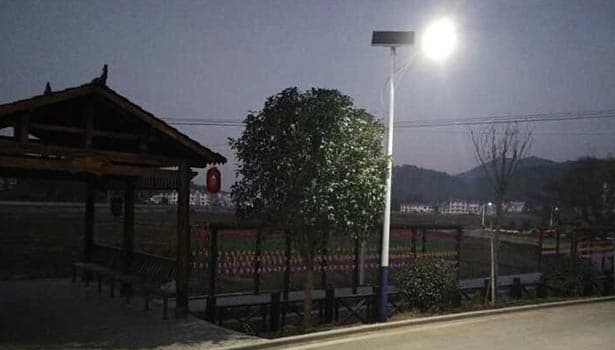
Failure of solar street lights key components
LED light source failure
LED is the "light-emitting terminal" of street lights, and its faults mostly result from quality or process issues:
- Inferior LED chips: The light attenuation (brightness drop) of qualified LED chips does not exceed 20% after 10,000 hours, while that of no-name chips reaches 50% after 5,000 hours and is basically "dim" after one year.
- Loose internal welding: Poor welding techniques during production (such as false welding), and the welding points fall off when the street lights are exposed to outdoor vibrations (such as wind or vehicle vibrations), directly causing the LED to fail to light up.
The controller is damaged
The controller is responsible for managing the "charging - discharging - lighting" logic and is the "brain" of the street light. Common causes of faults
- Insufficient waterproof rating: A qualified controller must reach IP67 (capable of short-term immersion). If it is only IP65 (splash-proof), when moisture seeps in during rainy days, the internal circuit board will short circuit, with a failure rate of 60%.
- Missing overload protection: If the battery voltage is abnormal (such as overcharging or overdischarging), high-quality controllers will automatically cut off power for protection, while low-quality controllers do not have this function and will directly burn out the internal components.
Poor component quality
Some solar street light manufacturers use low-standard components to lower prices, resulting in street lights having a short lifespan from birth. The comparison of core parameters between high-quality and low-quality components is as follows:
|
Component Type |
High-Quality Component Standards |
Inferior Component Standards |
Impact on Lifespan / Performance |
|
Solar Panel |
Conversion efficiency: 18%–22%; tempered glass thickness: 3.2 mm; hail resistance (25 mm diameter). |
Conversion efficiency: 12%–15%; glass thickness: 2 mm; hidden cracks within 1 year; 30% less power generation; scrapped within 3 years. |
Shortened service life and significant reduction in power generation efficiency. |
|
Controller |
IP67 waterproof; supports overcharge, overdischarge, and short-circuit protection; operating temperature: -30℃ to 60℃. |
IP65 waterproof; no overload protection; failure rate 80% within 1 year when used at 0℃ to 40℃. |
High failure risk and very short lifespan under normal outdoor conditions. |
|
LED Light Source |
Branded chips; luminous efficacy: 130 lm/W. |
No-name chips; luminous efficacy: 80 lm/W; |
50% light attenuation within 2 years; requires replacement. |
Maintenance and Installation Errors of Solar Street Lights
Even if the environment is suitable and the components are of high quality, improper installation or maintenance can still lead to the rapid failure of street lights.
The "dirt accumulation" on the panel affects efficiency
Most operation and maintenance parties neglect the cleaning of the panels, resulting in the long-term accumulation of dirt. A certain municipal data shows:
- Urban road street lights: Clean once a month, maintaining a panel efficiency of over 90%; If not cleaned for three months, the efficiency will drop to 65%.
- Street lights in industrial parks: Due to the high dust content, they need to be cleaned every two weeks. If they are not cleaned within a month, the efficiency will drop directly to 50% and the battery cannot be fully charged.
Construction errors cause functional abnormalities
Wiring error
Common mistakes include:
- Reverse connection of positive and negative terminals: If the positive and negative terminals of the controller and the battery are reversed, the controller will be burned out the moment it is powered on (inferior controllers have no reverse connection protection), and the repair cost can reach 200 to 500 yuan.
- Loose terminals: The connection terminals between the panel and the controller are not tightened properly. After long-term vibration, the contact is poor, resulting in a daily power generation loss of 15% to 20%, and the battery is chronically discharged.
Not installed firmly
- Unstable fixation of the lightpost: If the depth of the foundation is insufficient (for example, if 1 meter is required but only 0.5 meters is actually needed), typhoons or strong winds may cause the lightpost to tilt and the panel to crack due to collision with the ground.
- Incorrect panel installation Angle: The optimal tilt Angle for panels in the Northern Hemisphere is "±5° of local latitude" (for example, in Beijing at 39° latitude, the tilt Angle is 34°-44°). If the Angle deviates by 20°, the power generation will decrease by 25%.
Physical damage
- Installation process: Dropping during transportation (if the panel drops from a height of 1 meter, 80% of it will have hidden cracks), impact by installation tools (such as a wrench hitting the LED lightshade, resulting in a decrease in light transmittance);
- Usage process: Pedestrian graffiti (paint covering the panel to block light), vehicle collisions (street lights in roadside parking Spaces being hit by reversing vehicles, lightpoles bending), vandalism (malicious damage, such as smashing LED lightheads).
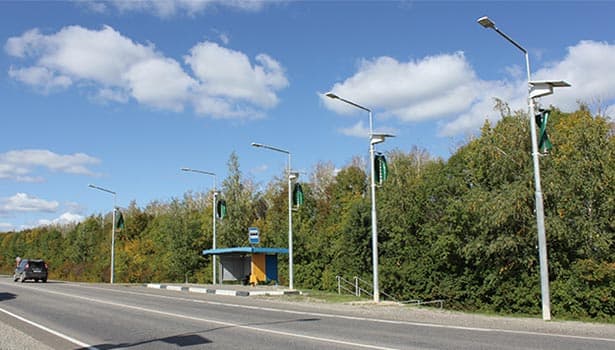
4 Measures to Extend the Lifespan of Solar Street Lights
To ensure that solar street lights have a designed lifespan of 5 to 8 years, efforts should be made from four dimensions: site selection and installation, component selection, daily maintenance, and professional operation, to systematically avoid the risk of failure.
Scientific Site Selection and Installation
Investigate the lighting conditions in advance
Use a "solar irradiator" to measure the average daily effective sunlight duration at the installation point (which should be ≥4 hours), and avoid obstructing trees and buildings (if it is impossible to avoid, regularly prune branches or adjust the installation position).
- Determine the orientation and Angle of the panel: For the Northern Hemisphere, south orientation is preferred. The tilt Angle should be set at "±5° of local latitude" (for example, for Guangzhou with a latitude of 23°, the tilt Angle is 18°-28°).
Strengthen the sealing protection of components
- Controller and battery box: With a waterproof rating of IP67 or above, waterproof tape is wrapped around the terminal blocks, and desiccants are placed inside the box (replaced every three months in humid southern regions).
- Bottom of the lightpost: Pour a concrete foundation (depth ≥1 meter, diameter ≥0.5 meters), and seal the connection between the foundation and the lightpost with waterproof glue to prevent rainwater from seeping in.
Select High-Quality Components
When making a purchase, pay close attention to the following parameters to avoid being misled by "low prices"
|
Component Type |
Recommended Standards |
|
Battery |
Lithium iron phosphate battery; |
|
Solar Panel |
Monocrystalline silicon panel; |
|
LED Light Source |
Luminous efficacy ≥130 lm/W; |
|
Controller |
Waterproof rating IP67; |
Strengthen Daily Maintenance
Formulate the "Solar Street light Operation and Maintenance Plan", clearly defining the maintenance frequency and content:
|
Maintenance Cycle |
Maintenance Content |
Operation Standards |
|
Weekly |
Visual inspection of light posts, LED operation, and solar panel surface condition. |
Check for tilted poles, malfunctioning LEDs, and visible panel damage. |
|
Monthly (Urban Roads) / Every Two Weeks (Industrial Areas) |
Clean solar panels with a soft cloth and clean water; remove dust and fallen leaves. |
Avoid scratching tempered glass during cleaning. |
|
Quarterly |
|
Ensure stable voltage range; maintain firm connections; keep components clean and dry. |
|
Annual |
Replace desiccant in battery box. |
Replace LED source if brightness drops by >30%; confirm panel integrity with infrared inspection. |
Professional Installation and Operation
- Installation team: Select a qualified construction party (such as one with the "Professional Contracting Qualification for Urban and Road Lighting Engineering"). The installation personnel need to be trained and familiar with the component wiring standards.
- 3 Tests need to be conducted after power-on:
Charging test: Observe the charging current displayed on the controller during the day (normally 0.5-2A, depending on the power of the panel);
Discharge test: Observe at night whether the LED lights remain stable without flickering;
Protection Test: Simulate battery over-discharge (disconnect the panel) to check if the controller automatically cuts off the power supply to the LED.
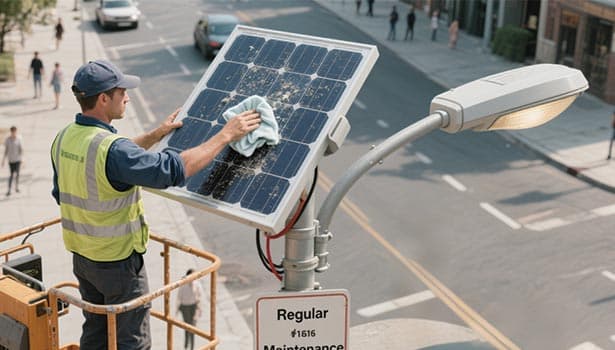
The rapid failure of solar street lights is not due to "unreliable products themselves", but rather the result of the combined effects of "insufficient environmental adaptation, improper component selection, and human operational errors". For the purchasing party, it is recommended to give priority to solar street light manufacturers that offer one-stop services including "selection consultation + installation guidance + after-sales maintenance", such as NOKIN, to reduce the risk of failure from a full life cycle perspective. If you encounter any problems in the selection or operation and maintenance of solar street lights, you can further consult NOKIN's professional technical team to obtain customized solutions.

